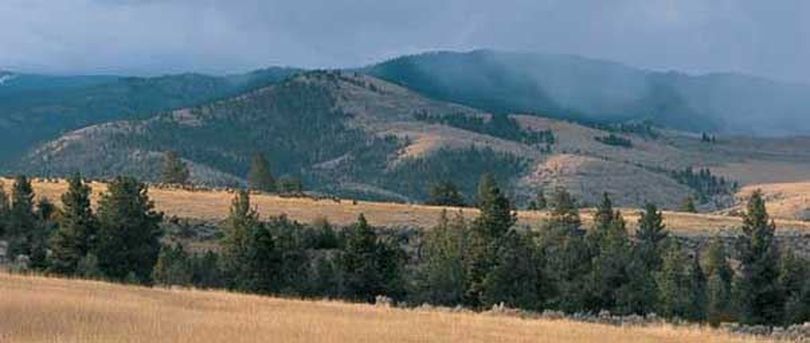Elk Foundation funds Washington habitat projects

WILDLIFE – Nine counties in Washington have been granted nearly $180,000 for habitat projects and research from the Rocky Mountain Elk Foundation.
The 2014 grants will affect nearly 1,600 acres in Asotin, Cowlitz, Jefferson, King, Okanogan, Pend Oreille, Pierce, Skamania and Yakima Counties.
The money will boost local, state and federal programs for prescribed burns, forest thinning, meadow restoration, noxious weed treatments and other projects, said David Allen, RMEF president.
“We also committed considerable resources toward three different elk studies including one focused on determining the cause of hoof rot,” he said.
RMEF volunteers in Washington raised the money through banquets and activities.
Since 1985, RMEF and its partners completed 521 different conservation and hunting heritage outreach projects in Washington.
Read on for the specific projects funded by the 2014 grants.
RMEF grants will fund the following 2014 Washington projects, listed by county:
Asotin County—Treat 325 acres of noxious weed populations such as rush skeletonweed, whitetop, spotted knapweeds, hawkweeds and sulfur cinquefoil before they become established.
Cowlitz County— Aerial spray 75 acres, plant 15,000 trees/shrubs and seed 50 acres to decrease noxious weeds and increase elk forage production and quality in an area that showed poor body condition in elk that winter within the 27,000-acre Mudflow Unit of the Mount St. Helens Wildlife Area; treat mouse-ear hawkweed within 100 acres of the Mount St. Helens Wildlife Area and National Volcanic Monument with additional work completed by volunteers who may pull Scotch broom whips.
Jefferson County—Enhance the forage on 60 acres of previously pre-commercially thinned habitat for Roosevelt elk by piling slash to improve animal movement on the Olympic National Forest.
King County—Purchase six new GPS collars and refurbish four others to place on elk in the Snoqualmie Valley study area to determine if elk are using the newly created habitat areas, and to get a better population estimate in order to manage an elk herd (numbering approximately 480) near the communities of North Bend and Snoqualmie. This project will also thin and seed an additional 30 acres to provide forage for elk away from the valley floor.
Okanogan County—Thin 303 acres to prepare for an 804-acre prescribed burn to stimulate growth of grasses, forbs and shrubs for elk, mule deer and other wildlife in the Chesaw Wildlife Area.
Pierce County—Relocate an existing gate to better protect wintering elk and increase utilization of three newly created forage openings in the Snoqualmie National Forest. A fourth opening is planned. This winter range closure (Dec 15-May 1) has been in existence with an agreement between the U.S. Forest Service, Washington Department of Fish and Wildlife and timber industry landowners for more than 30 years.
Pend Oreille County—Use prescribed fire to remove encroaching conifers and improve forage production on 200 acres of elk summer range in the upper Middle Fork Calispel Creek Drainage on the southernmost edge of the Colville National Forest; and apply prescribed burning to 90 acres of a decadent shrub field to rejuvenate browse above Lost Creek drainage designated as elk winter range in the Colville National Forest.
Skamania County—Complete 222 acres of restoration at four meadow sites by removing encroaching conifers, removing four miles of old barbed-wire fencing and installing boulders and a gate to prevent motorized vehicle access to three of the meadows in the Gifford Pinchot National Forest. Two of the four meadows receiving treatment support Mardon skipper butterfly and pale blue-eyed grass, both Sensitive Species; provide funding for a study assessing the changes in the carrying capacity for elk near Mount St. Helens by comparing the eruption blast zone with state and federal land outside the blast zone where timber cutting was drastically reduced. Quantifying changes in elk habitat conditions will provide a foundation for evaluating forest management, predicting future habitat condition trends and a basis for elk population management in the area.
Yakima County— Treat 20 miles of roadside and 200 acres of rangelands for noxious weeds on the Oak Creek Wildlife Area with a focus on the Sanford Pasture area that was recently acquired with RMEF assistance.
Statewide—Fund lab analysis, sample supplies and sample shipment of calf elk tissue with early hoof disease lesions to labs around the world to address the factors behind the outbreak of hoof rot affecting the Willapa Hills and Mount St. Helens elk herds in the southwestern corner of Washington; provide funding to help expand a program offering listening sessions and soliciting input of new sportsmen's groups, community leaders, policymakers, and others about public land concerns such as maintenance and public access.
